Communication between a customer and a copywriter is like a railway connection: a train will not arrive from point A to point B if the rails break off somewhere halfway or are laid incorrectly. If the performer does not receive complete and reliable information, they will not be able to write a good text and send the completed task back to the client.
In the last article, we already wrote, why bad texts are written according to your term of reference. Today we will tell you how to lay the rails of understanding in the direction of "customer-copywriter" (back and forth) and survive. How to make communication clear and unambiguous for both parties. And we will start, of course, with the basics - the definition of basic terminology.
The term of reference in copywriting is a document in which the customer (often through a SEO specialist) sets out in detail their requirements for the textual content, as well as the criteria by which they will then evaluate it. If, as a result, the text does not meet the stated criteria (for example, % uniqueness, spam), the customer has every right not to pay for the task until corrections are made.
It is worth noting that in order to draw up a competent term of reference, you need to be able to analyze your business and competitors, target audience, be a bit of a marketer and understand what optimized content for a website is and what role it plays in promoting a resource in search engines.
The terms of reference must be drawn up in order to:
state your requirements in a structured way;
indicate the time frame for writing;
add specific information/wishes;
limit the "flow of thought" of the performer to topics and key queries, LSI phrases;
specify criteria for evaluating/checking the text.
The accuracy and completeness of the information in the TOR is a guarantee that the text will be as useful as possible for the business, that is, it will perform the function you need (sell, remove objections, inform, etc.). This document is a unified language of communication between the client and the contractor, therefore it must be drawn up according to certain rules.
Before moving on to the instructions for writing the terms of reference, I would like to talk about the value of the content for promotion in search engines, namely about its key characteristics, which have the greatest weight in this matter. This will allow you to better understand the value and necessity of creating the terms of reference.
This is an indicator of the absence of duplicates (identical texts) posted on the Internet, and one of the first criteria by which search engines evaluate the quality of content on a page. Measured in percentage. Distinguished between actual and semantic (about it later) uniqueness.
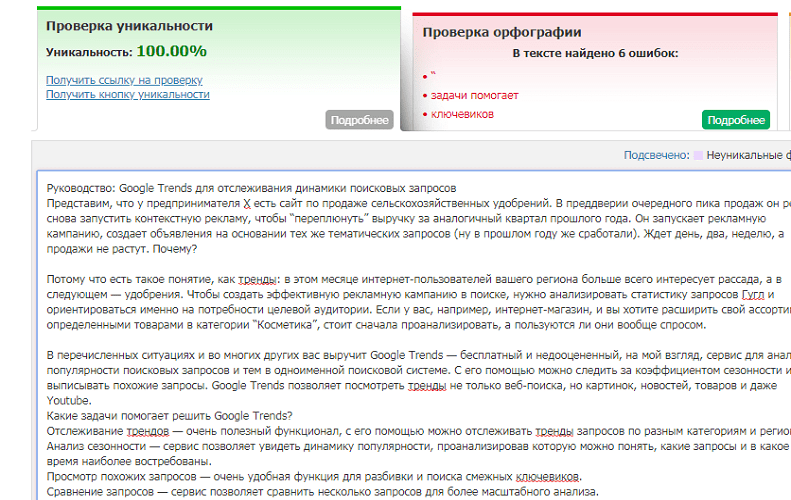
If a performer is an expert in a given topic and wrote a text from scratch, then it is not a fact that it will be 100% unique. What can reduce uniqueness:
use of technical terminology, brand names that cannot be replaced by synonyms;
multiple use of numbers;
the use of sayings, quotes, famous catch phrases, etc.
Provided that the semantic uniqueness is preserved at a high level in the text, all of the above does not harm it and does not affect the promotion. It is important to look not only at the results of the anti-plagiarism program check, but also to thoughtfully re-read the text 1-2 times before accusing the author of non-unique content. If the service found matches for words like Adidas and Puma, then there is nothing to worry about. But coincidences in phrases and whole sentences cannot be forgiven - send them right back for revision.
Search bots respect uniqueness in everything: in text, images, design, etc. For open and multiple plagiarism, they immediately punish them in the form of lowering their positions in the search results. Both Google and Yandex will quickly fix the copy-paste with the appropriate ranking algorithms and punish the “thieves” by imposing filters on the site.
Just textual uniqueness is not enough: the content should have a semantic, so-called added value in the form of a comprehensive disclosure of the topic, expert opinion, novelty, relevance - in short, be useful and interesting for the reader. This is quite difficult to achieve with the usual rewriting from a source that came to hand.
When indexing web pages, search robots primarily think about Internet users. You should do the same when creating content for your website if you want to make it search engine friendly.
You can check the semantic uniqueness only by re-reading the text yourself. There are no special programs for assessing this criterion yet.
Spam is an indicator of the number of keywords in the text as a percentage. The higher the percentage of spam, the more optimized the text is. But there is a big fat BUT here. Search engines treat over-optimized content very badly.
Overspam is the overuse of keywords. It is not difficult to recognize such a work of a copywriter: in each sentence there is an occurrence of a key phrase, in general, the text does not carry a significant semantic load and is difficult to read. As an example, I would like to cite a fragment of an article from the Yandex blog for webmasters, in which the release of the new Baden-Baden algorithm was announced:
“SEO-text is an indispensable component of website search engine promotion. Since ancient times, such texts have been used in Russia for SEO, search engine promotion, search engine optimization and website promotion. Wondering how to write a SEO text inexpensively? It is very easy to write a SEO text - just contact a SEO text writing specialist in Moscow, St. Petersburg and other cities of Russia. The SEO text that you need to write must have two important properties - it must be text, and it must be SEO…”
The developers of the search engine promised that for such texts, sites will be lowered in the search results without any indulgences or warnings. They keep their word to this day. Google, by the way, is taking equally drastic actions for re-optimization.
How to determine the rate of spaminess? It all depends on what service you will be carrying out semantic analysis. The most popular are:
1. Advego.com
It is believed that not a single word in the text should go beyond 3-5%. Why is there such a spread? Because it all depends on the volume and the keyword itself. For example, the word “doors” cannot be replaced with a synonym, so it can occur more often, the main thing is not in every sentence, but once every 200-400 characters. In the example below, the text has natural keyword content, which is very good:
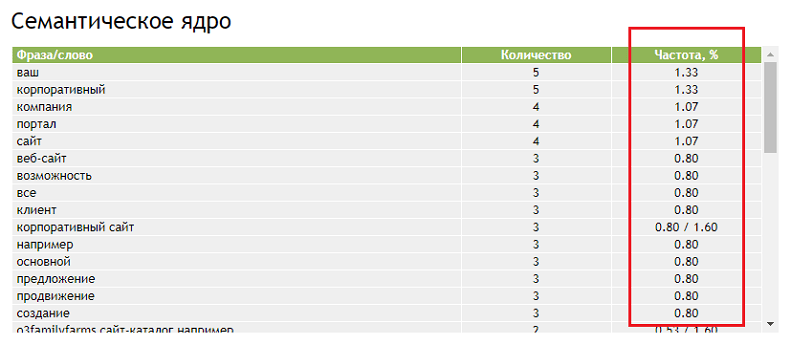
2. Text.ru
It has a verification algorithm that is different from the generally accepted one and, accordingly, indicators. The tool analyzes and collects all repeated words in the text (including keys), interpreting it as spam. The optimal indicator is up to 30%, but rarely does anyone match it. 30-35% of spam on Text.ru is about 3-5 occurrences of keywords, which is quite acceptable for articles with a high coefficient of useful information.

This service also shows the most frequently used words in the text:
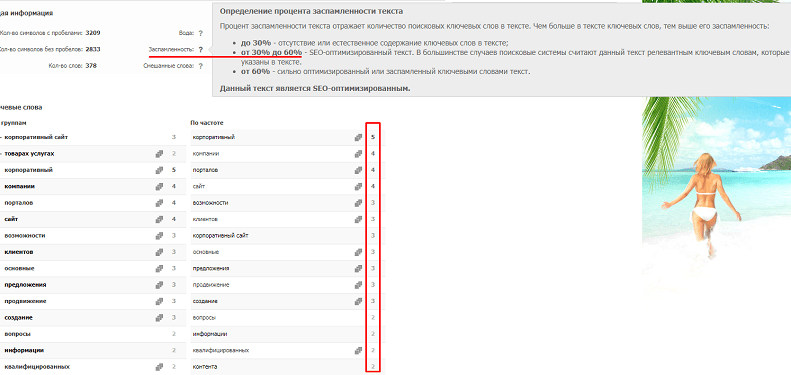
Deeper semantic analysis can be done using Istio.com, for example.
This is the percentage in the text of words devoid of semantic load. Novice copywriters, due to their lack of experience and regulars of copywriting exchanges, often overlook this parameter, but it shows better than others how valuable the written information is.
Many people “pour some water” to increase the volume of what has been written or when they do not understand the topic at all. As a result, such “pearls” are born:
“This is by far the best deal you can find on the Internet.”
or
“Company X is the leader in the electronics market," which in turn is committed to providing you with the best service.”
Readers and search algorithms perceive such information in the same way - as completely uninteresting and meaningless. The more water there is in the text, the less useful it is. Therefore, any work of a copywriter should be checked for water content.
This can be done using the same Text.ru. There is a good indicator of water content - up to 15%.
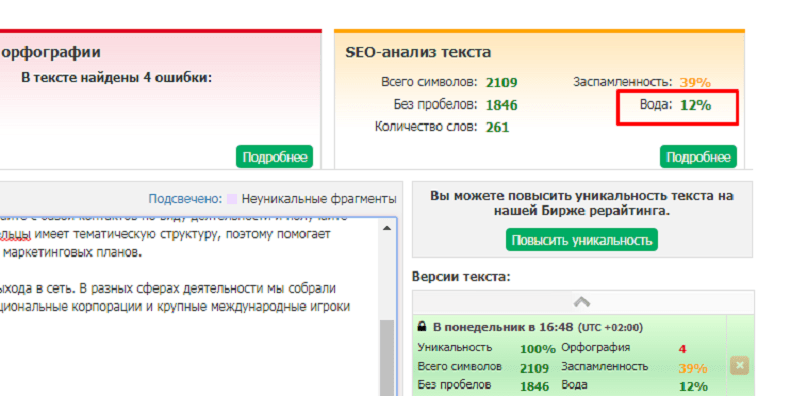
Glvrd.ru will also help to determine the amount of water. But the service evaluates this parameter differently: a score below 7 points indicates “watery” text, and 10 points - with a minimum water content.

Writing a good selling text or blog article is half the battle. For the material to be readable and useful to the website, it must be visually appealing to the visitors. This means adhering to the rules of creating and formatting content:
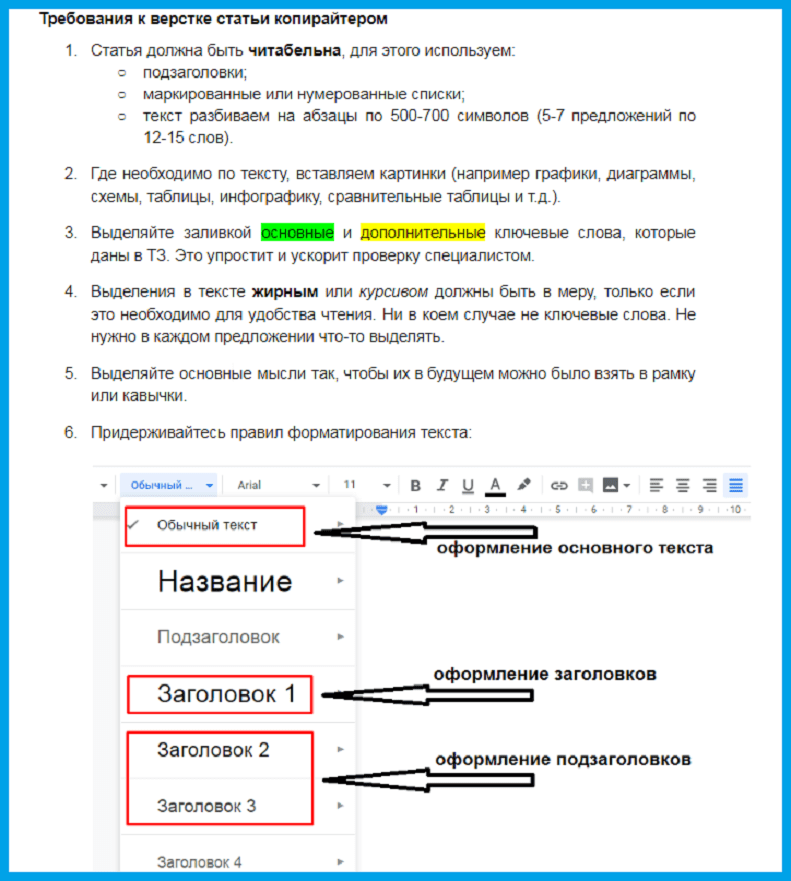
Even a text that is good in content but bad in design will not work and will not bring the desired effect. On the contrary, a disregard for the visual design of a publication is fraught with a high bounce rate, a low average session duration, and other parameters negative for sales growth.
Drawing up the terms of reference for the copywriter is a large and scrupulous analytical work, which, as a result, bears fruit: the performer dives deeply into the topic, and you get the text you expected. It is enough to prescribe a significant part of the technical specification once - these are the rules and requirements that must be adhered to, regardless of the type of content and topic.
In total, the detailed study of the technical task takes a lot of time. But then you do not have to conduct a lot of days of correspondence with the copywriter, explaining and proving that their writing does not meet your expectations and the material needs to be redone for the eleventh time.
If you need to update old content on a website or text for a new page that has already been created, post a link to it. After reviewing other materials on the portal, it will be much easier for the author to create content that matches the general style and manner of writing.

What type of content do you need? For the blog, for the main page, for a specific section, for the media, for social networks, product cards?
What is the task of the text? Sell, inform, remove objections, involve?
What type of content do you need? Advertising, advertising and informational, informational? Genre affiliation depends on the site of the future publication and its goals.
Answer these questions and formulate your specific requirement, for example:

If writing content is one of the steps in SEO promotion, then in the TOR it is necessary to indicate which keywords to use by the performer for specific text on the web page. To collect a good semantic core, SEOs use special paid and free (Yandex.Wordstat, Google Keyword Planner) services, and also collect the most relevant keywords manually.
The structure of the text is based on the collected semantic core. The most important words go to the heading and subheadings, less important words are evenly distributed throughout the text in direct / indirect occurrences. Why do you need to know this? If you want to get a structured material, then in the TOR you need to paint the structure of the text with a ready-made heading and subheadings or draw up an assignment for their writing, for example:

In order for the author not to deviate from the topic and write the material in accordance with your expectations and the expectations of the reader, you additionally need to collect and indicate LSI phrases - thematic words and phrases that increase the correspondence of the web page with the text to the request of the Internet user. For example, for the keyword “submersible pumps”, the following LSI phrases can be used:
technical specifications;
principle of operation;
for dirty water;
for a well;
price, etc.
How to design a list of keywords simply and clearly:
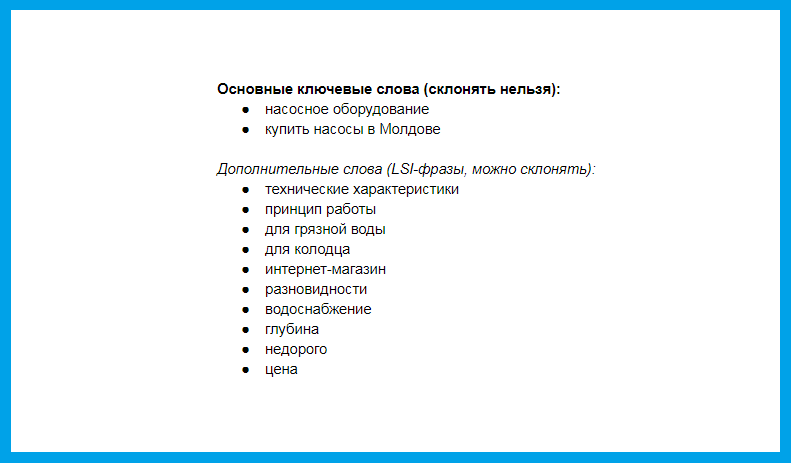
If you do not believe in the myth that everyone can collect semantics without knowledge and experience, then there are 2 options:
Find an SEO specialist who will audit the site and then collect the semantic core to update the content. They will give you the results of their work, and you can finish drawing up the technical assignment.
Contact a professional IT company that provides comprehensive services, from initial audit or website development to writing optimized and customer-oriented content. In this case, you relieve yourself of the need to draw up a technical task and delve into the intricacies of the process. The site will be filled with new content and ready to sell.
To better understand what kind of texts you need for the site, look at what and how your competitors in the niche write. Pay attention to the manner of presentation, structure of materials. It is also useful to look at the social networks: often there you can identify topics that most encourage audience engagement, and then reveal them on your portal.
We have already described above what uniqueness, spaminess, water are and why they are important for promotion. You can find a middle ground and specify the values of these parameters that will be relevant for all texts, without exception:

As for the volume, it cannot be averaged. It depends on the topic, the number of main and additional keywords, place on the page and other factors. Sometimes a theme literally requires a full-fledged longread, and sometimes 1000 characters for a category is a lot.
If you have an information portal or blog and there is no strict binding to key queries, then to indicate the volume, you can start from the structure:
the introduction is usually short (up to 500-700 characters);
the blocks with descriptions/techniques/advantages/how to choose - this is from 1000 to 1500 characters);
the block “Why it is worth ordering from us” - 500-700 characters.
“Based on the number of keywords, it is advisable to use 1 key in a direct entry for +/- 1000 characters. For example, you give 4 main keywords and 3-5 thematic blocks in the text structure. The optimal size in this case is 4000-4500 characters without spaces.”
Do you want a cool text on the main page or in the "About Us" section? Do you dream to look like a professional, a reliable and reputable company in the eyes of Internet users? This is impossible if you give the terms of reference for writing such a text, but do not provide any information about yourself (year of foundation, success story, awards / achievements, staff size, USP, key areas of work and the benefits of working with the company).
The performer begins to think out of their head or rewrite the texts of the competitors, and as a result, instead of a selling or a branded content, you get the hackneyed “we are the leaders”, “we are the best”, “we can be trusted” and other watery phrases without a drop of specifics. And this is not the fault of the copywriter if you do not want to provide initial information about the company and do not give it out when they are trying to pull it out of you by asking leading questions.
The main goal of drawing up the structure is to maximize the disclosure of the topic, so that after reading the text, all questions and objections of the reader are closed. There are two options for making future material logically structured:
1. You describe in the TOR what questions should be disclosed, but the structure itself (the volume and sequence of thematic blocks) remains at the discretion of the author. In this case, you cannot make claims such as: “I wanted it first to be about the causes of the disease, and then about the symptoms. And the symptom block should have been larger. ” After submitting the finished work, you have no right to demand from the copywriter a free rework of the text on those points that were not in the TOT.
This option allows you to save time on drafting the terms of reference and is only suitable if you have been cooperating with the author for a long time and are confident in their competence. In all other situations, I recommend using option №2.
2. You completely write the structure:
make up the Н1, Н2 and Н3 or give an assignment, with which keywords they need to be drawn up;
briefly clarify what should be discussed in a specific subheading;
what is the optimal volume;
whether it is necessary to use bulleted lists or quotes in the text, if so, in which blocks.
For how such a structure looks in practice, see the end of this publication.
The presentation and style are largely determined by the type and purpose of the content, and, of course, by the wishes of the customer. If you attach a link in the TOR to an article that you like the most in the manner of presentation, most likely you will get a very similar text.
How can you independently issue requirements for informational texts and blog articles:
.png)
The literacy is a separate issue. It seems that the absence of grammatical and punctuation errors in the text is a natural requirement that should be followed by default. But no. Copywriters are made, not born. When you contact a performer, you cannot always be sure: are they already a big shark or only a small shark that recently swam out of the harbor of copywriting exchanges. Therefore, the description of literacy requirements, as they say, is a must have. It is also advisable to indicate which services the author should use in order to check the quality of the written material:

You give the TOR for review to the copywriter, then the deadlines for the delivery of the finished material are negotiated. But often the preparation of the terms of reference is delayed, and as a result the text was needed “for yesterday”.
Not all performers are able and willing to work under tight deadlines. Therefore, the only way out is to contact a copywriting agency or a large IT company, which has a large staff and a high probability of getting a free author.
If you are an SEO specialist or a project manager and you need a ready-made material for a specific date, then you should specify the deadlines:
In 1-2 weeks, if the text goes to a novice author. What if theydoesn't have time or there will be a lot of mistakes? Leave some time for rework or finding another copywriter.
In 1-3 days if you work with verified authors. Consider your workload in order to have time to check the text and transfer it in the proper form to the customer.
This can be a ban on the use of the letter "e" or specific words, for example, a hospital or institution in the text advertising the services of a private clinic. If it is unacceptable for you to use certain words, fonts, etc. in your publication, indicate them in a list.
It is possible if you are a SEO specialist in an IT company, for example, which employs an experienced copywriter who does not need an explanation of the rules for writing content. In all other cases, the option “Here are the keys, here is a competitor's article. Write me a text with the same structure, please ” will not work. Because there are no technical requirements, volume, clarifications about the occurrences of keywords (from which to make up H1, H2, and which to distribute throughout the text).
There is only one way out - to overpower yourself and draw up a TOR once, most of which you will use in the future without changes. Further, the matter remains small - to change the structure and keywords for each new text.
Summing up all of the above and putting it into a single whole, we got this TOR, divided into two parts: theoretical and practical. Theoretical is a set of technical requirements, layout requirements, grammar, content and style, categorical texts. Also included here are recommendations for working with the TOR. Items that are not important to you can be excluded (for example, if the number of subheadings of the 2nd level does not matter).
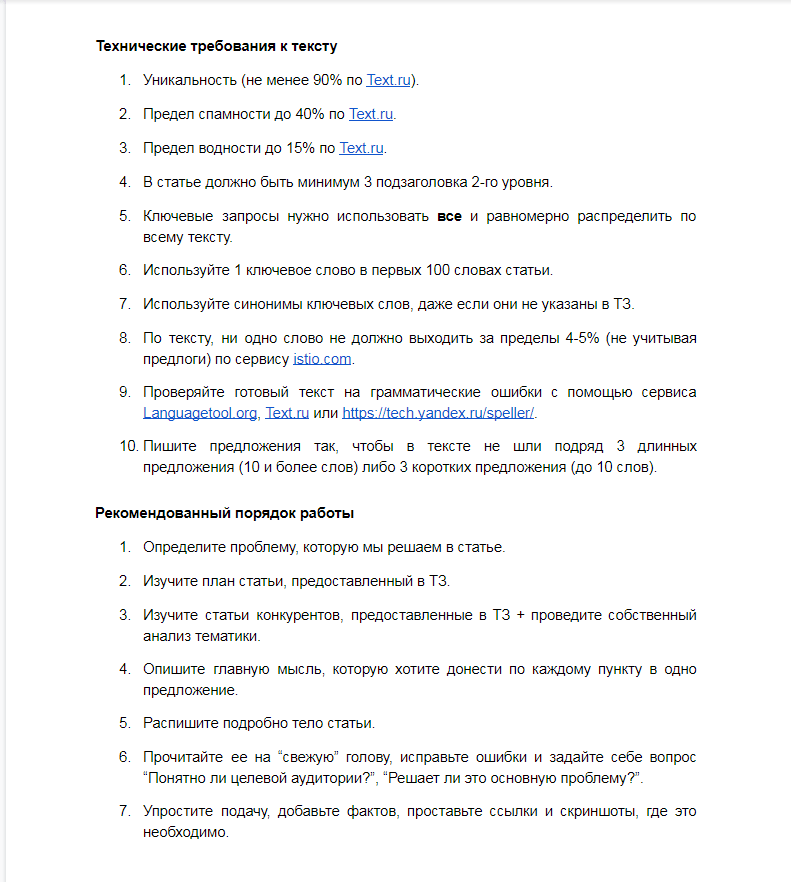
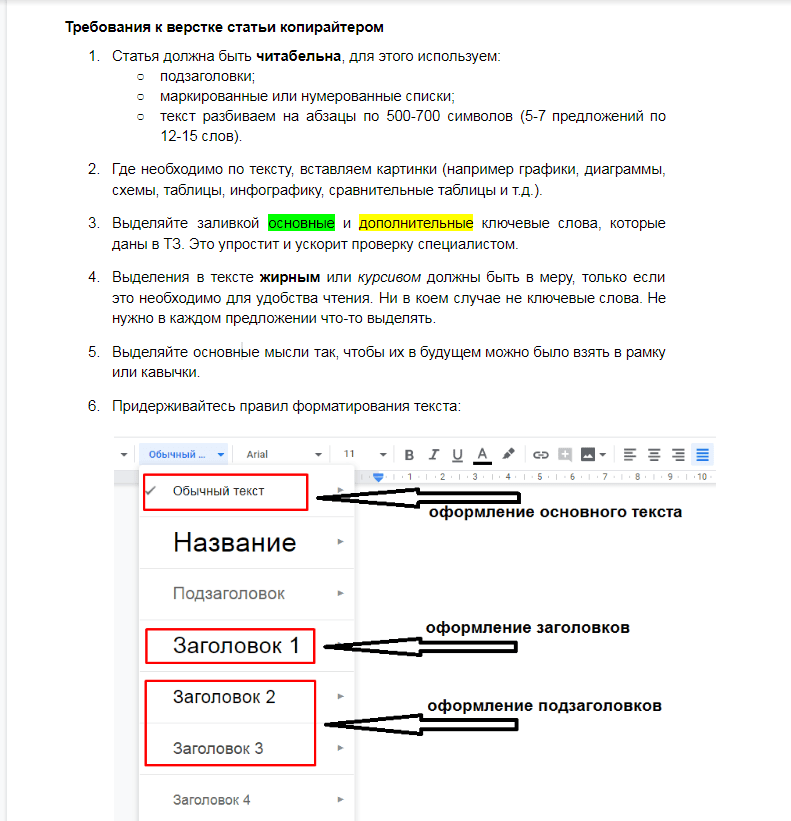
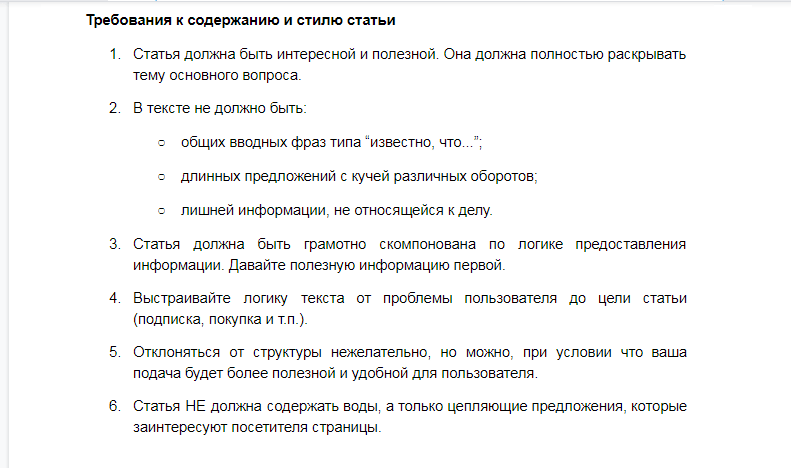

So! We are finished with the theoretical part. Now we will simulate the practical part of the technical specification: we will collect a list of keywords for it and write down the structure.
Please note: the information is fictitious and is given solely as an example of drawing up a structure.
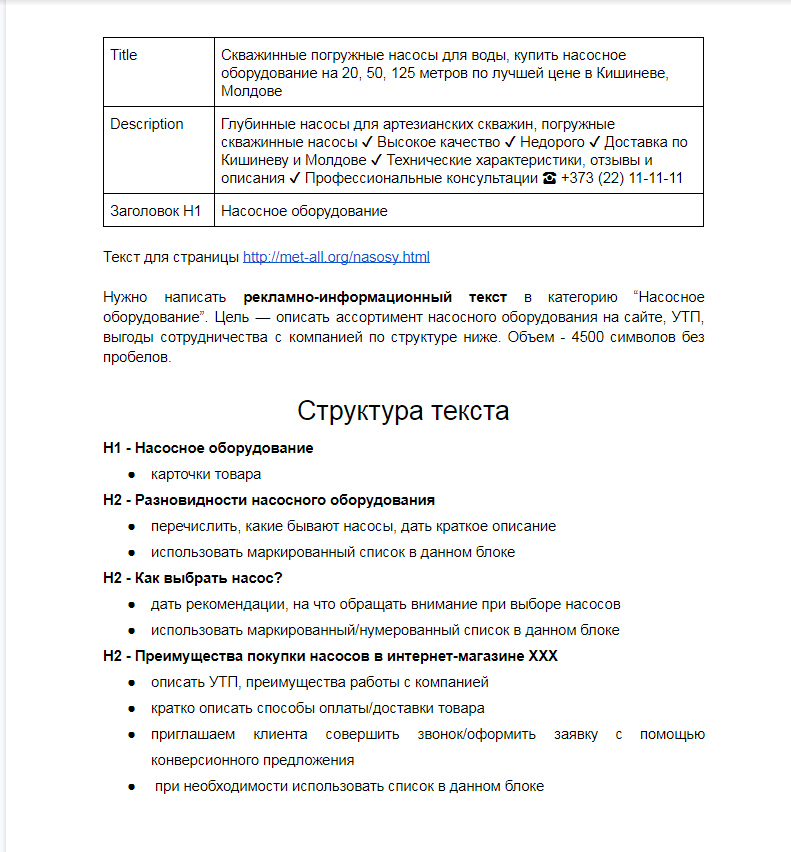
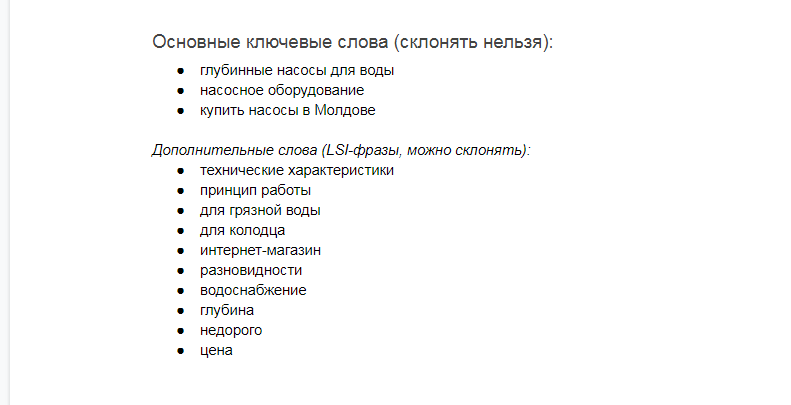
Now you know how to draw up a TOR for writing text content. This is difficult to do the first time, but not fatal (tested on myself). Here, as in any other endeavors, the important step is to start. Use our manual to build your own terms of reference for cool and useful texts. We are sure you will succeed!
Leaders in the IT market |
| 14+ years of experience and innovative solutions to help your business stand out and grow. |
Inspiring portfolio |
| 150+ successful projects: from sleek landing pages to complex corporate systems. |
Team of experts |
| 51+ professionals who bring your ideas to life with maximum efficiency. |

| NOTORIUM TRADEMARK AWARDS |
| Notorium Trophy 2017, Notorium Gold Medal 2018, Notorium Gold Medal 2019 |

| TRADE MARK OF THE YEAR |
| Gold Medal 2016, Gold Medal 2017, Gold Medal 2018, Gold Medal 2019 |

| THE BEST EMPLOYER OF THE YEAR |
| According to the annual Survey conducted by AXA Management Consulting - 2017, 2018, 2019 |